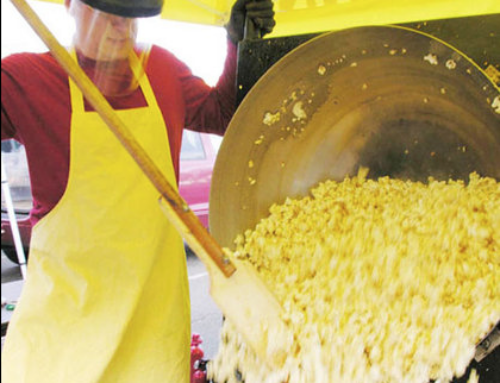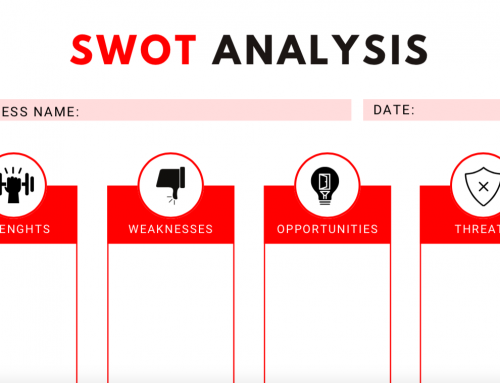Podcast: Play in new window | Download | Embed
Subscribe: RSS
I got a question from one of our food business academy premium members last week that I felt would be valuable to share with all the readers / listeners of this podcast. She asked about the best ways to test market her new food products and get feedback. The answer is in the notes below and audio lesson — thanks for sending in the question, Haley!
What is Test Marketing?
Test marketing is a way to see if there’s demand for your product. Without testing, it’s possible you could be creating a food product that no one wants. If nobody wants your product, you unfortunately don’t have a business.
Test marketing is often over-looked as an “I don’t have to do that” step of starting a food business. But, it’s arguably the most important step – even more so than packaging design, costing, and distribution strategy.
Without test marketing, your product might fail. And failure isn’t an option when you’ve got so much money, time, and resources tied up into your little food company that could (or couldn’t).
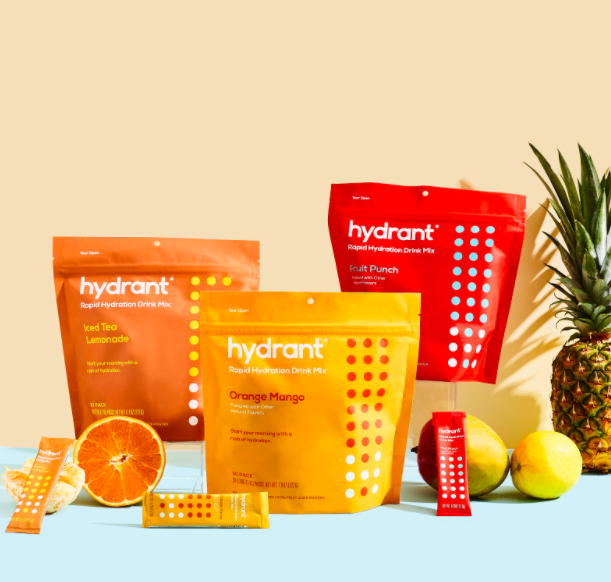
Hydrant mailed free samples to bloggers and social media influencers to ask for product feedback.
Here’s what you’ll learn in this podcast:
- Why test marketing is crucial to the success of your food business
- Where to do your test marketing (and why you have to be careful with friends and family)
- The proven 5-step plan to test marketing (this is exactly what I do to test market new flavors for Green Mountain Mustard
- Examples of small food businesses that failed test market their products. Like a grasshopper candy maker at a local farmers market.
- Learn the secret benefits of test marketing and how the product gets customers involved in the recipe development process. We’ve tried inventive new mustard flavors like cinnamon mustard and sweet potato mustard and people always flock to our booth to try those new flavors. Most of these flavors never see a full production run.
- Find out how our show sponsor Gusto can help manage payroll and HR for specialty food businesses.
How to Test Market a Food Product
Have you been playing around in your home kitchen, trying to come up with the next best chocolate chip cookie? Or maybe, you’ve got the “secret sauce”.
Creating a food product is one thing. But, making a product consumers buy over and over again is tough.
That’s why test marketing your new food idea is the way to go.
Test marketing gives you an idea of who would buy your product, for how much money, and if they would change anything about it.
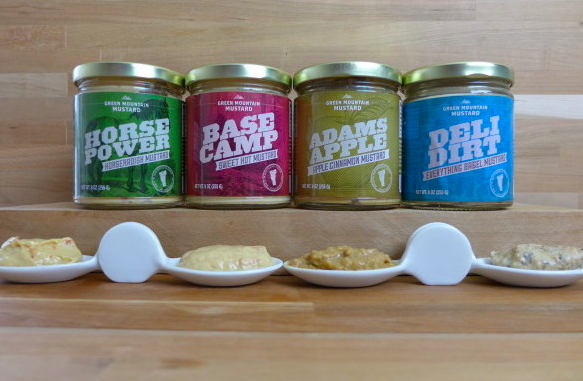
I used test marketing to determine each of these mustard flavors.
Of course, when you’re testing something out, a million things could go wrong. You could get a false sense of hope, you could find out that, while delicious, people won’t buy your product. Or, the worst – no one’s a fan. Hard to believe with food products, I know, but it’s happened to me before.
So how do you get the biggest bang for your buck from your test marketing efforts?
It’s not easy. You’ll likely be test marketing for several months before you pull the trigger. But don’t worry! Once you get an idea for what your customers like, you’ll get more clarity on the specific products that are going to be a success.
For now, let’s get your first test marketing under way. Here’s a few specific ways to get started.
6 tips to help you test market your food product:

One of our early labels.
1. Don’t let family and friends give you feedback
Family members are supposed to be honest, right? Not exactly. When I was test marketing my energy bars and mustard, family members often sugar-coated their feedback. They weren’t upfront with me. Same with friends – they want to be supportive which means they tell you what you want to hear. This ultimately means you don’t get the best feedback.
To find people who aren’t friends and family, ask co-workers at work, post an ad on Craigslist looking for focus group participants, or give your family a couple test products and tell them to bring it to work. Since their co-workers don’t know you, they’ll be honest.
Related Reading: 25-Step Plan to Make Your Food Company a Reality
2. Perfect one product
Test marketing a line of 10 products is overwhelming. It creates decision paralysis for your test group. Plus, it can alter the taste of products if you have them taste multiple varieties. By focusing on one flavor, you’re able to perfect that recipe. Then, when you’re successful with one, use your test group to expand your product line.
After you’ve got one food product customers crave don’t stop the testing there. Continue going through the process for each new flavor you add.
One example of a company that followed this exact rollout process is called Bitchin’ Sauce out of Carlsbad, California. The original Bitchin’ Sauce is a unique lemon and garlic dip made from almonds with a similar texture to hummus. This single flavor launched the Bitchin’ Sauce brand that’s now sold in major retailers like Costco. Only after building momentum and proving their concept did the company start to release other flavors like pesto and chipotle. They did not release multiple flavors at once to kick off the business. Launching with eight or more flavors would have infinitely complicated the process for this family run operation. Keep things simple in the beginning!
3. Retailers are not your customers
The first place many companies just starting out go for research is their local grocery store. And that’s not a good idea. Sure, it’s awesome to get the buyer’s attention, but retailers aren’t your customer. The retailer’s customers are the ones buying your product. By staying focused on consumers, you’ll get the feedback you need to found a fantastic food company.

More photos of our mustard line.
4. Prepare for criticism
Let’s face it – not everyone is going to LOVE your food product. In fact, just a few weeks ago, I was told one of my test mustard flavors “sucked”. I kid you not. While 8 out of 10 customers are likely to think your product is worth buying, it’s the other 20% you should pay attention to. Why don’t they like it? What can you do better? Taking this criticism and feedback is important. It helps you make a product 100% of people enjoy.
5. Craft a 30-second pitch
“Try this and tell me what you think” is probably one the worst ways to get a customer to try your product. It’s bland, boring, and not engaging. Work on a short pitch about your product. What makes it different? Do you have unique ingredients? This pitch is not only useful for consumers, but you’ll need it when it comes to selling your product to retailers.
Test marketing is necessary to start a food business and produce a product consumers are going to fall in love with. Just making salsa, brownies, or spice blends because you like to cook isn’t a great reason to start your food business. Why?
It reminds me of a quote I heard from one of my marketing professors in college:
“Make what people will buy – not what you want to sell”
That quote is spot on. If customers like chunks in their salsa, make it chunky. If customers only want to buy your triple chocolate fudge sauce then discontinue the other flavors. Focus on what your customers are telling you, respond in a timely manner, and watch your food business take off.
6. Get survey responses from people that tasted your sample.
Create a short 2 – 4 question survey to help document feedback. Here a few specific questions I would include in these short forms. Make sure these surveys can be completed in less than 3 minutes.
- Would you purchase this product?
- How much would you pay for the product?
- Can you describe the flavor to me in your own words?
- Do you have any improvements or suggestions you would like implemented?
By asking these specific questions you’ll get a better understanding of whether or not people will actually pay for your food product and get specific ideas on ways to improve the recipe if needed.
Take this feedback home and look for patterns. If one tester thinks the product is to thin or too thick, don’t worry about it. If you see a trend those are the pieces of feedback you want to take action on.
Processing feedback from test marketing events
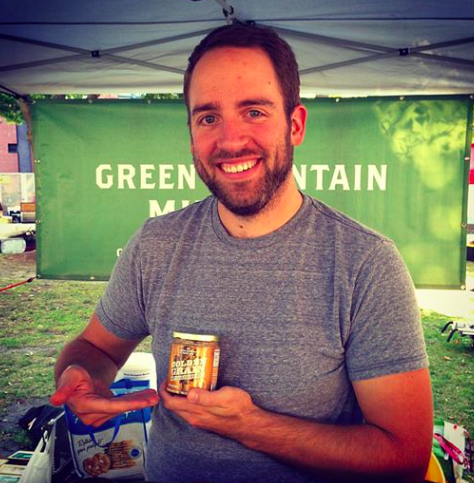
Getting flavor feedback at a local farmer’s market.
One final bonus tip. Do your best to get into a zen state of mind when you’re accepting feedback (aka criticism) about your flavors and food. Believe it or not, many founders will go through the process of test marketing their food product only to throw out the results for any number of reasons.
Maybe they tested providing free samples at the wrong location without a market fit. Maybe the batch wasn’t quite right on that day. Maybe the samplers don’t know good food when they taste it!
Related Reading: Menu & Recipe Cost Template – Download My Spreadsheet
While the reasons listed above can in fact be true in certain situations. Don’t continue to move forward with the same approach to a food business if you tested your idea across multiple events and received the same type of feedback. Don’t fall in love with an idea that’s destined to fail and lose you money.
If a food item doesn’t resonate with customers, don’t take it to heart either. Just because no one liked your first food idea it’s in no way a reflection on your skills or ability to launch a successful food brand. Head back to the test kitchen and start brain storming another food idea you can bring into the world.
Do you have any test marketing tips for people who want to launch their food business? Let me know in the comments. If you want to more case studies like this one from proven food founders, don’t forget to join our community of 40,000+ members. Each week we’ll send you a new case study straight to your inbox.


